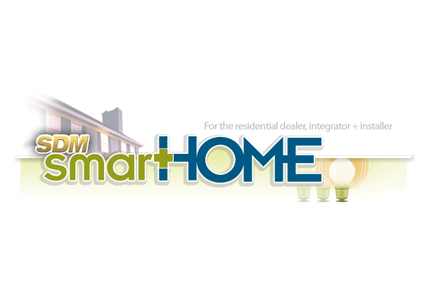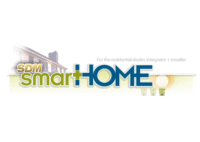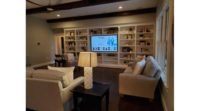Taking the ‘Goldilocks’ Slant to Home Automation

It’s time to monetize.
But isn’t it always time to monetize? No doubt, as Parks Associates, the Dallas-based market research and consulting company, brought together an early November webinar featuring an industry panel aimed at “Expanding Home Security: Understanding the New Value Proposition” and to flesh out the details while traditional home security monitoring shifts to interactive.
Tom Kerber, director, research, home controls and energy at Parks, set the table by pointing out that the “residential security market has seen many and large changes” including the impact of smartphones and tablets. “There now is a wide array of new devices and products that were only once available in the high-end systems,” he said.
And just as the verbiage has shifted from good-old money making to monetization, the way homeowners make their security and home automation systems work has shifted from those traditional, old-timey keypads to new-age interactive smartphone and tablet interfaces with their own, oh my gosh, keypads.
The bundle of folks assembled by Parks for this webinar — Roy Perry, vice president, ecosystem alliances, Alarm.com; Bill Scheffler, senior director of North American business development, Sigma Designs; and Steve Shapiro, group director, product management, ADT Corporation — also spent time talking about the bundling of home security monitoring by cable and telecommunications firms and what they and dealers are doing about it.
There are the numbers, of course.
Perry said he has “more than a million customers.” Shapiro said he has “6.5 million standalone residential and small business customers,” although far fewer subscribe to ADT Pulse, the more recently introduced “beyond-security” offering on the residential side. And Sigma Designs with its proprietary Z-Wave, and what Kerber says is the dominant home communications protocol, boasts “700+ devices in the Z-Wave Alliance family,” Scheffler said. His firm hosted the webinar.
But the bundle battle is big time, if a subscriber base to harvest for monitored security and home automation matters. Comcast Xfinity has 18.6 million subscribers; Time Warner has 11.1 million; AT&T has 16.5 million; and Verizon, which does not offer security monitoring in its bundle, has 8.8 million subscribers, according to Leichtman Research Group.
Pressure from these mass market players as well as pressure from within the security industry forces change.
According to Perry, it is a time of transformation in home security. “There are wireless technologies of all kinds. Everything is converging. The value chain in the past was the home security dealer, product manufacturers and the central station. Inserted now is a new rich set of capabilities.” He contended the goal is a “unified experience to customers.”
He sees emerging revenue sources from referrals, fees and new recurring monthly revenue streams, including partnerships with organizations such as utilities, home builders and even government agencies that go beyond the typical.
Still, Perry saw looming challenges. The new value proposition “requires a whole new set of tech skill sets for dealers, adopting IP, the Internet, home area networks. There are new costs and new risks and a higher touch when dealing with customers. Platform providers also are growing more important,” he said.
For Shapiro, “When we first launched ADT Pulse, we did it through our regular channel. Independent dealers are now stepping up to sell and install Pulse.” He sees the new value proposition impacted by features such as remote control home door locks and cameras. “We are way past sirens and smoke detectors. Now it is a platform. Before you needed mag stripe and readers, and now you have Z-Wave locks that are inexpensive. Cameras are now wireless and weather resistant.”
The ADT executive also sees next steps that will include home healthcare and home entertainment.
When it comes to self-monitoring approaches and off-shelf retail solutions, Shapiro admitted home control is a growing category but these new competitors “don’t know all the capabilities of home controls, home energy management.” The new faces do raise awareness that can help the traditional security and automation sources. “Retail can also provide awareness and reach. But providing boxed units on a store shelf many not work. It hasn’t in the past,” he said.
He did suggest, however, that after a homeowner has a professionally installed and maintained platform in place, there is more DIY ease of adding on to that existing system “with Z-Wave devices as a retail sales potential, adding additional light control or door control.”
Scheffler believed the bottom line is interoperability of the devices, no matter who made them, what they do or how they are integrated. “Right now, we see higher growth in door locks and lighting with many choices for devices.” Down the road, he contended are systems for the aging in place market.
Perry urged dealers to take an overall “Goldilocks approach — not too much, not too little.” He suggested the new value proposition is all about knowledge-based information. For instance, dealers can “offer smart meter capability at next to nothing by platforming to an existing system.” While agreeing that telecommunications and cable bundling reduces churn, “attrition drops by 40 percent when bundling the traditional security panel with telecom or cable services,” those firms have a “weak track record when it comes to home security, central monitoring, installation and liability,” Perry said. Time will tell if their offering will ever become “just right” for end users.

|
|
At a recent Web-based panel presentation by Parks Associates, the market research and consulting company reported specifics of homeowner perspectives. Security and lighting seem to be at the top of most desired capabilities of home monitoring and management systems. |
Looking for a reprint of this article?
From high-res PDFs to custom plaques, order your copy today!








